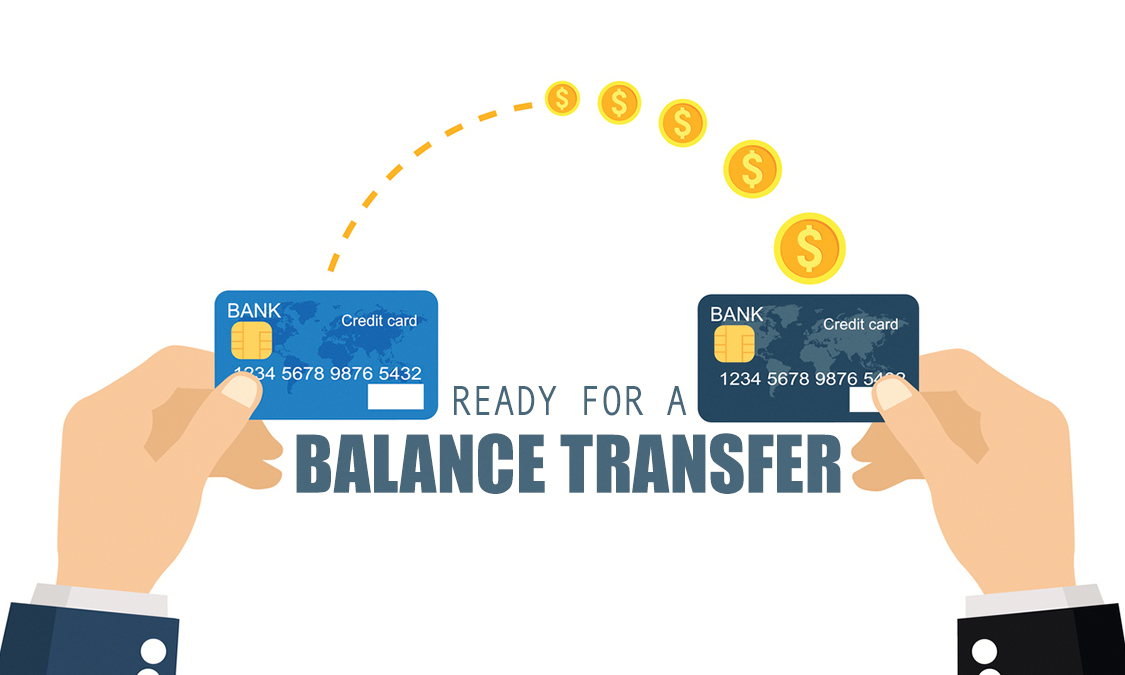
Balance transfer credit cards offer a tempting solution for those burdened with high-interest debt. By transferring existing balances to a new card with a lower introductory APR, you can potentially save money on interest charges and pay off your debt faster. But before diving into this strategy, it’s crucial to understand the ins and outs of balance transfer credit cards, including their benefits, drawbacks, and how to use them effectively.
This guide will explore the world of balance transfer credit cards, examining their mechanics, the key factors to consider when choosing one, and the best practices for utilizing them to your advantage. We’ll also delve into alternative debt consolidation options to help you make an informed decision that aligns with your unique financial situation.
What are Balance Transfer Credit Cards?

Balance transfer credit cards are a type of credit card that allows you to transfer outstanding balances from other credit cards to the new card. This can be a helpful tool for managing debt, especially if you can secure a card with a 0% introductory APR (annual percentage rate) for a certain period.
The main purpose of a balance transfer credit card is to help you consolidate your debt and potentially save money on interest charges. By transferring your balances to a card with a lower APR, you can pay down your debt faster and reduce the overall amount of interest you pay.
Benefits of Using Balance Transfer Credit Cards
Balance transfer credit cards offer several benefits that can make them a valuable tool for managing your debt. Here are some of the key advantages:
- Lower Interest Rates: One of the primary benefits of balance transfer credit cards is the opportunity to secure a lower APR compared to your existing credit cards. This can significantly reduce the amount of interest you pay over time, allowing you to pay down your debt faster.
- Consolidation of Debt: By transferring multiple balances to a single card, you can simplify your debt management. This can make it easier to track your payments and ensure you’re making progress towards paying off your debt.
- 0% Introductory APR: Many balance transfer credit cards offer a 0% introductory APR for a specific period, typically 12 to 18 months. This allows you to make interest-free payments during this period, making it easier to pay down your balance.
- Rewards Programs: Some balance transfer credit cards offer rewards programs, such as cash back or travel miles, which can help you earn rewards while you pay down your debt.
Potential Drawbacks of Using Balance Transfer Credit Cards
While balance transfer credit cards offer several benefits, it’s important to consider the potential drawbacks before applying for one.
- Balance Transfer Fees: Most balance transfer credit cards charge a fee for transferring your balance. This fee is typically a percentage of the balance transferred, which can add up quickly, especially if you’re transferring a large amount of debt.
- Limited Timeframe: The 0% introductory APR period on balance transfer credit cards is typically limited to a specific timeframe, such as 12 to 18 months. Once this period expires, the standard APR kicks in, which can be significantly higher than the introductory rate. If you haven’t paid off your balance by the time the introductory period ends, you’ll start accruing interest at the higher rate, potentially negating the initial benefits of the card.
- Credit Score Impact: Applying for a new credit card can temporarily lower your credit score, as it represents a hard inquiry on your credit report. If you’re already struggling with debt, a lower credit score could make it more difficult to secure other forms of credit in the future.
- Minimum Payment Requirements: Balance transfer credit cards typically have minimum payment requirements, which can make it difficult to pay off your balance quickly if you’re struggling financially. Failing to make your minimum payments on time can result in late fees and damage your credit score.
How Balance Transfer Credit Cards Work

Balance transfer credit cards allow you to move outstanding balances from other credit cards to a new card with potentially lower interest rates, saving you money on interest charges. This process involves transferring your existing debt to a new credit card issuer, usually with a promotional period offering 0% APR.
The Process of Transferring a Balance
The process of transferring a balance to a new credit card is relatively straightforward. You’ll typically need to:
- Apply for a balance transfer credit card: This involves providing your personal and financial information, including your credit score and debt details.
- Get approved for the card: The issuer will review your application and decide whether to approve your request.
- Provide the details of the credit card you want to transfer: This includes the card number, the amount you want to transfer, and any relevant account information.
- Receive the balance transfer: Once the transfer is approved, the new card issuer will pay off your existing credit card balance. You will then be responsible for repaying the transferred balance to the new card issuer.
Terms and Conditions Associated with Balance Transfer Offers
Balance transfer offers usually come with specific terms and conditions, which you need to understand before transferring your balance. Some common terms include:
- Balance transfer fee: This is a percentage of the amount transferred, typically ranging from 3% to 5%.
- Promotional APR: This is the introductory interest rate offered for a limited period, usually 0% APR. After the promotional period ends, the interest rate will revert to the standard APR, which can be significantly higher.
- Minimum payment requirement: You’ll need to make minimum payments on your balance transfer credit card each month, even during the promotional period.
- Grace period: This is the time you have to pay off your balance before interest starts accruing. If you don’t pay the balance in full within the grace period, you’ll be charged interest on the remaining amount.
Factors Influencing Interest Rates and Fees
Several factors can influence the interest rate and fees associated with balance transfers. These include:
- Your credit score: Individuals with higher credit scores are typically offered lower interest rates and fees.
- The amount you’re transferring: Larger balance transfers may attract higher fees.
- The credit card issuer: Different credit card issuers have different policies regarding balance transfer fees and interest rates. It’s essential to compare offers from various issuers before making a decision.
Finding the Right Balance Transfer Credit Card
Finding the right balance transfer credit card requires careful consideration of your financial needs and the features offered by different cards. It’s crucial to compare various options to secure the best deal that aligns with your specific circumstances.
Factors to Consider When Choosing a Balance Transfer Credit Card
Before diving into specific card offers, it’s essential to understand the key factors that influence your decision.
- Balance Transfer Fee: This is a percentage of the balance you transfer, typically ranging from 3% to 5%. A lower fee saves you money upfront.
- Introductory APR: This is the interest rate you’ll pay for a specified period, usually 0% or a low rate, allowing you to save on interest charges during the introductory period.
- Regular APR: This is the interest rate you’ll pay after the introductory period ends. Look for a card with a low regular APR to minimize long-term interest costs.
- Credit Limit: Ensure the credit limit is sufficient to cover your existing debt and allow for future purchases.
- Rewards Program: Some balance transfer cards offer rewards programs like cash back or travel points. Consider if these benefits are valuable to you.
- Annual Fee: Some cards charge an annual fee, which can offset the benefits of a low introductory APR.
Comparing Balance Transfer Credit Card Offers, Balance transfer credit cards
Once you understand the key factors, you can compare different balance transfer credit card offers. Here’s a breakdown of how to analyze different offers:
Interest Rates
Interest rates are a crucial factor. Compare the introductory APR, the regular APR, and the duration of the introductory period. Aim for a card with a long introductory period and a low regular APR.
Fees
Balance transfer fees, annual fees, and other associated fees can significantly impact your savings. Compare these fees across different cards and factor them into your overall cost analysis.
Introductory Periods
The introductory period is the time you’ll enjoy the low interest rate. A longer introductory period gives you more time to pay down your balance without accruing significant interest charges.
Using Balance Transfer Credit Cards Effectively
Balance transfer credit cards can be a valuable tool for saving money on interest charges, but only if you use them strategically. By understanding how to maximize their benefits and manage your debt effectively, you can use these cards to your advantage and reach your financial goals faster.
Strategies for Maximizing Benefits
- Transfer High-Interest Balances: The primary benefit of a balance transfer credit card is the opportunity to reduce interest charges. Prioritize transferring balances with the highest interest rates to your new card, especially those from credit cards with variable rates, which are subject to fluctuations.
- Take Advantage of Introductory Periods: Balance transfer cards typically offer a promotional period with a 0% APR. During this period, you can focus on paying down the transferred balance without accruing interest charges. This can significantly reduce the overall cost of your debt. However, it is crucial to note that the introductory period is usually limited, and a standard APR will apply after it expires.
- Avoid New Purchases: Once you transfer your balance, resist the temptation to use the new card for additional purchases. Focus on paying down the transferred balance during the introductory period. Using the card for new purchases will negate the benefits of the 0% APR and increase your overall debt.
- Consider Balance Transfer Fees: Most balance transfer cards charge a fee, typically a percentage of the transferred amount. Factor in these fees when comparing different cards, as they can impact the overall cost savings. Some cards offer a balance transfer fee waiver for a limited time, so look out for such promotions.
Managing Debt and Avoiding Interest Charges
- Create a Budget: Develop a realistic budget that tracks your income and expenses. This will help you identify areas where you can cut back and allocate more funds towards paying down your debt.
- Set a Payment Schedule: Determine a consistent payment amount and schedule for your balance transfer card. Aim to pay more than the minimum payment each month to accelerate the repayment process.
- Avoid Late Payments: Late payments can result in hefty penalties and can negatively impact your credit score. Set reminders or automate payments to ensure timely payments.
- Monitor Your Credit Utilization: Your credit utilization ratio, which is the percentage of your available credit that you are using, can affect your credit score. Aim to keep your utilization ratio below 30%.
Paying Down the Transferred Balance Quickly
- Prioritize Payment: Make paying down the transferred balance a top financial priority. Allocate as much of your disposable income as possible to the balance transfer card until it is paid off.
- Consider Debt Consolidation: If you have multiple high-interest debts, consider consolidating them into a single loan with a lower interest rate. This can streamline your payments and potentially reduce your overall debt burden.
- Seek Financial Advice: If you are struggling to manage your debt, consult with a financial advisor or credit counselor. They can provide personalized guidance and strategies for debt management.
Alternatives to Balance Transfer Credit Cards

While balance transfer credit cards can be a valuable tool for debt consolidation, they’re not the only option. Other methods, such as debt consolidation loans and personal loans, offer different advantages and disadvantages. Understanding these alternatives can help you choose the best approach for your specific financial situation.
Debt Consolidation Loans
Debt consolidation loans combine multiple debts into a single loan with a new interest rate and repayment term. They can simplify your finances by reducing the number of monthly payments and potentially lowering your overall interest costs.
Advantages of Debt Consolidation Loans
- Lower interest rates: If you have good credit, you may qualify for a lower interest rate on a debt consolidation loan than on your existing debts, saving you money on interest charges.
- Simplified payments: You’ll have just one monthly payment instead of multiple, making it easier to manage your finances.
- Potential for faster debt repayment: With a lower interest rate, you may be able to pay off your debt faster.
Disadvantages of Debt Consolidation Loans
- Higher interest rates: If you have poor credit, you may end up with a higher interest rate on the consolidation loan than on some of your existing debts, increasing your overall debt burden.
- Potential for longer repayment terms: Some lenders offer longer repayment terms, which can lead to paying more interest over time.
- Potential for additional fees: Consolidation loans may come with origination fees or other charges that can add to the overall cost.
Personal Loans
Personal loans are unsecured loans that can be used for various purposes, including debt consolidation. They offer flexibility and can be a good option if you need a loan quickly.
Advantages of Personal Loans
- Fast approval and funding: Personal loans are often processed and funded quickly, making them a convenient option for urgent needs.
- Flexible use: You can use a personal loan for any purpose, including debt consolidation, home improvements, or medical expenses.
- Fixed interest rates: Personal loans typically have fixed interest rates, protecting you from fluctuating interest rates.
Disadvantages of Personal Loans
- Higher interest rates: Personal loans often have higher interest rates than secured loans, such as mortgages or auto loans.
- Potential for origination fees: Personal loans may come with origination fees that can add to the overall cost.
- Limited loan amounts: The maximum loan amount you can qualify for may be limited, depending on your creditworthiness and income.
Last Word
Balance transfer credit cards can be a powerful tool for tackling debt, but they’re not a one-size-fits-all solution. Careful planning, responsible use, and a commitment to paying down the transferred balance are essential for maximizing their benefits and achieving your debt-free goals. By weighing the pros and cons, understanding the terms and conditions, and exploring alternative options, you can make a well-informed decision that sets you on the path to financial freedom.
Questions Often Asked
What is the typical introductory APR offered on balance transfer credit cards?
Introductory APRs for balance transfers can range from 0% to a few percentage points, but they usually last for a limited period, typically 6 to 18 months. After the introductory period ends, the regular APR, which can be significantly higher, kicks in.
Are there any fees associated with balance transfers?
Yes, most balance transfer credit cards charge a fee, usually a percentage of the transferred balance. This fee can range from 3% to 5%, so it’s important to factor it into your calculations.
What are the minimum credit score requirements for balance transfer credit cards?
The minimum credit score required for balance transfer credit cards varies by issuer, but generally, you’ll need a good credit score (at least 670) to qualify for the best offers. However, some cards cater to individuals with lower credit scores, though they may have higher interest rates and fees.
What happens if I don’t pay off the transferred balance before the introductory period ends?
If you don’t pay off the transferred balance before the introductory period ends, you’ll start accruing interest at the regular APR, which can be significantly higher than the introductory rate. This can quickly negate the benefits of the balance transfer.





